- Register
- Log in to Tune-In
- Wishlist (0)
-
Shopping cart
(0)
You have no items in your shopping cart.
Beatles News

We already brought you part one of our list of 15 things you didn’t know about Ringo Starr, and now we’re back with part two! Check out eight more facts about the drummer for The Beatles below! You might be surprised by what you learn.
Number Eight: He Once Played a Wizard in a Movie. In the musical-cum-comedy Son of Dracula, Ringo has quite the role. He plays Merlin the wizard. Of his role, he has said, “It’s not the greatest movie in the world, but I’ve seen worse.”
Number Seven: He Is the Only Beatle Not to Be Inducted for His Solo Career. Though every other Beatle has been inducted into the Rock Roll Hall of Fame for their subsequent solo careers, Ringo has not. It’s unclear how he feels about this.
Number Six: He Wasn’t Always Ringo Starr. Ringo Starr was actually born Richard Starkey. He began calling himself Ringo because of all of the rings he liked to wear. The second part of his new name, “Starr,” originated from his time playing with the band Rory Storm & the Hurricanes, where he had a featured slot titled “Starr time.”
Number Five: He Had a “Step Ladder.” When Ringo’s mother remarried, she ma details

Ringo Starr may be best known as the legendary drummer for The Beatles, but there are some things about this 75-year-old musician that most people don’t know. Here, we present our list of 15 things you don’t know about Ringo Starr. Check out part one below, and stay tuned for part two, coming soon!
Number Fifteen: He Was Part of a Children’s Show. In the mid-1980s, Ringo was hired to be part of the children’s show called Thomas The Tank Engine. He voiced the narrator and a character named Mr. Conductor.
Number Fourteen: He Was Naturally Left-Handed. Like fellow Beatles member Paul McCartney, Ringo was naturally left-handed. However, rather than play music that way, he played on a right-handed drum set. His grandma was the one who encouraged him to be ambidextrous.
Number Thirteen: He Wasn’t Always Confident of His Position With The Beatles. On his first day at the Abbey Records Studio, Ringo was replaced by 32-year-old Andy White after producer George Martin said he would prefer a session drummer. This made him concerned that he would lose his spot with The Beatles.
Number Twelve: He Has Been Insulted by Muhammed Ali. Apparently, Muhammed Ali was not a big fan of Rin details

I don’t remember the first time I heard Revolver. It was probably when I was really young. My dad, keen on honing my life as a music aficionado from a young age, would’ve probably played it while I was still in my mum’s womb. An avid Beatles fan since forever, my dad is responsible for my siblings and I having classic rock music in our lives from birth, and I am so indebted to him because of this.
You go through stages with your parents’ music. You’re too young to know, then you’re old enough to be too “cool”, but for me, I think I got out of that phase really quickly. Maybe it was my dad’s refusal to change his CDs to one of mine or my sister’s in car trips, even when I begged him not to play The Who‘s Tommy album because it was giving me nightmares. “But it’s just so good! Listen to that,” he would exclaim, turning up some searing guitar solo in Pinball Wizard whilst I blocked it out with some Delta Goodrem. He did once let me have control during that one drive where I played the Destiny’s Child Christmas album, but only wanted hear Eight Days of Christmas for the hour-long journey.
“You’ve got to listen to th details

We already brought you part one of our list of 15 things you didn’t know about Paul McCartney, and now we’re back with part two! Check out eight more facts about this legendary member of The Beatles below – you might be surprised by what you learn.
Number Eight: He Is an Excellent Drummer. Though it’s obvious that McCartney is a naturally gifted musician, it wasn’t discovered just how good of a drummer he is for quite some time. Paul can be heard on the drums in the songs “Back In The U.S.S.R.” and “Dear Prudence.”
Number Seven: He Is Partially Responsible for the Invention of the CT Scanner. Very, very partially. The record label that The Beatles belonged to was called EMI, and EMI also had a computer research facility. That facility was run by Godfrey Hounsfield, who, at the time, was very involved in the development of CT scanning. The money that The Beatles made for EMI eventually allowed EMI to invest in Hounsfield’s technology, which would result in the CT scanner.
Number Six: He Is Also Partially Responsible for Inventing Heavy Metal. “Helter Skelter” is widely considered to be one of the first, if not the first, heavy metal s details

Legendary musician and ex-Beatle Paul McCartney is one of the most highly publicized figures of the 20th century. Despite the fact that numerous biographies have been written about him, some information has still managed to slip through the cracks. Here we present a list of 15 things you didn’t know about Paul McCartney. Check out part one below, and stay tuned for part two, coming soon!
Number Fifteen: He Was Inspired to Play Lefty by Slim Whitman. Paul McCartney was always a lefty, but he didn’t always know that he could play guitar that way. However, once he went to go see Slim Whitman in concert, he realized that people could play guitar the left-handed way, and everything changed.
Number Fourteen: He Liked the Idea of Dressing Up to Perform. McCartney was the one who first suggested all members of The Beatles wear ties while they perform. He was 15 at the time.
Number Thirteen: He Rescued John Lennon From a Snafu With Elvis. In 1965, The Beatles met up with Elvis Presley to meet and socialize. However, Elvis became incensed when John Lennon began making comments about the Vietnam War. Lennon also flirted with Elvis’ wife, Priscilla. To make up for his behavior, McCartney suggested details
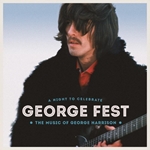
George Fest, a star-studded tribute show dedicated to the music of George Harrison, will be released as a concert film and album on Feb. 26, 2016. The show, which took place on Sept. 28th, 2014 at the The Fonda Theater in Los Angeles, featured some of music’s biggest names performing songs from Harrison’s Beatles, Travelling Wilburys and solo catalogs.
Performers included Brian Wilson and Al Jardine, The Flaming Lips, Perry Farrell, Conan O’Brien, “Weird Al” Yankovic, Heart’s Ann Wilson, The Killers’ Brandon Flowers, Norah Jones and Harrison’s son Dhani. Dhani also produced the album alsongside David Zonshine. “I’ve always imagined a small club show where my generation of musicians could cut loose on some of the deeper tracks from his career,” Dhani said in a release. “So, in a totally new and vibrant way, I once again found myself taking the stage with some of my most treasured musical heroes to the sound of the most familiar music in my life… I hope you enjoy listening to these as much as I do. They are some of the best interpretations of my father’s songs I could have ever thought possible.”
The concert will be released details

Liverpool, birthplace of one of the world’s most famous pop groups the Beatles, was declared as England’s first Unesco city of Music.
Friday’s accolade comes by 11 years after Unesco made Liverpool’s historic waterfront a world heritage site, Xinhua reported. Glasgow became the first British city to receive a “City of Music” title in 2008. Unesco said in a citation the new title has been awarded to the city due to music’s place at the heart of Liverpool’s contemporary culture, education and the economy — from the live music scene to tourism, music management courses and digital businesses. It was also given to the city based on its commitment to having a clearly defined music, education and skills strategy for young people so that Liverpool can continue to produce world class talent.
The judges highlighted urban festivals like Liverpool International Music Festival (LIMF), Liverpool Sound City and Liverpool Psych Fest that have cemented the city as a haven for music and also helped to develop young industry professionals.
The designation also noted the importance and contribution of established names such as the Royal Liverpool Philharmonic Orchestra, details
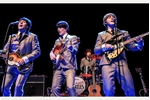
He looks, talks, sings and plays the bass guitar like Paul McCartney – but it was another Beatle who Steve White impersonated when he started out on the tribute circuit.
The 46-year-old originally mimicked John Lennon before his audience pointed out he had more than a passing resemblance to McCartney, who had actually been his main idol all along. So he learned to play guitar left-handed – just like the man himself – and started a journey that would eventually see him land a role in The Bootleg Beatles.
Since joining almost four years ago, Steve has toured the world and swapped crowds of a few hundred in British clubs for 15,000 fanatics in faraway places like Mongolia.
"Before The Bootleg Beatles I was playing the rhythm guitar in a John Lennon-type role but when we turned up at venues, people said 'you must be Paul'," says Steve, of Mansfield Woodhouse. "It happened more and more so eventually the bass player and I decided to switch. "I'm naturally right-handed at playing guitar and it used to nark me when people pointed that out so I put the strings on the other way on a cheap bass guitar and learned to play left-handed.
"It wasn't some sort of conceived masterplan to g details
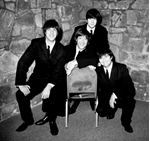
BEATLES For Sale are heading Penarth this December for a performance at the Paget Rooms.
The band were formed in 2005 by Welsh drummer Simon Adams and bring their Fab Four tribute to Penarth on Friday, December 18.
The band who are currently based in Cardiff and Brighton have a full repertoire of all the Beatles’ hits; from the early songs Please Please Me and Love Me Do through the Sgt. Pepper's classics like the title song itself and With a Little Help From My Friends to the piano led legendary hits Hey Jude and Let It Be.
The Beatles For Sale are one of the UK’s leading and most talented tribute bands, coming from an exemplary stable of musicians who’ve played with such artists as Neil Finn (Crowded House) and Midge Ure (Live Aid, Ultravox) and backed Morrissey and Nancy Sinatra, amongst others, including Mary Hopkin who actually sang and worked with The Beatles themselves.
Tickets to the show cost £12 in advance and are available from Foxy's Deli in Penarth or Spillers Records in Cardiff.
Last ever Beatles Live show was in Cardiff 50 years ago this month.
details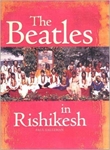
Paul Saltzman, author of the book, "The Beatles in Rishikesh" spent time with the group when they were staying at the Chaurasi Kutiya in 1968. The Canadian film producer, who was "nursing a broken heart" at that time, was counselled by John Lennon who provided him solace with the advice, "the really great thing about love is that you always get another chance."
He recounts to Shivani Saxena his memories of the Fab Four What are your abiding memories of the time you spent with the Beatles in Rishikesh? John was very kind to me, I'd arrived at the ashram to heal a broken heart, having just been dumped by my girlfriend. When John learned of this he said to me, " Ah, yes love can be very hard on us, can't it? And I said, "Yes" and then he said to me, "But, you know Paul, the really great thing about love is that you always get another chance."
In that moment, his wise perspective helped me to feel better, for which I will forever be thankful to John Lennon. How do you feel about the Beatles ashram as it is referred to now, being opened for tourists? I think it's wonderful that the ashram is being fixed up and reopened for visitors and Beatles fans. It's a historic site and I hope it draws more people from both withi details

A decision of Uttarakhand government will make millions of Beatles’ fans happy around the globe.
The state forest department on Tuesday opened the gates of ‘Chaurasi Kutia’ in Rishikesh - the place where the members of English band stayed during their visit to India.
‘Chaurashi Kutia’ popularly known as ‘Beatles Ashram’ will remain open for six months in a year as it is located inside Rajaji National Park (RNP), said DVS Khati, chief wildlife warden, while announcing the decision in the presence of forest minister Dinesh Agarwal.
The RNP remains open for the tourists from November 15 to June 15.
“We hope the ashram will be a treat to the Beatles fans. It will also emerge as a major attraction for the visitors,” Khati said.
Earlier this year, Uttarakhand Wildlife Board decided to start eco-tourism activities at the place which is literally worshipped by the fans of ‘Fab Four’.
Ringo Star, George Harrison, Paul McCartney and John Lennon visited Mahesh Yogi’s ashram here in February 1968 to learn transcendental meditation. They stayed here at the igloo shaped huts for nearly two months. During their stay, they pe details
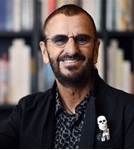
Ringo Starr has pocketed an extra $AUD1,076,288 after selling his personal copy of The Beatles "The Beatles" aka "The White Album" at auction. There's a trend towards downsizing when we get older. When the albums were initially manufactured the numbering was sequential so the buyer actually has the first copy of that classic recording every made. It was part of an extensive auction for Starr and wife Barbara Bach. The kit was used to record some of The Beatles" earliest tracks, including "Can't Buy Me Love", "She Loves You", "All My Loving" and "I Want to Hold Your Hand'. A drum kit played by Beatle Ringo Starr on some of the Fab Four's greatest hits has been snapped up at auction by the owner of the Indianapolis Colts NFL team for an eye watering $2.2m (£1.4m). The Colts owner and rock memorabilia enthusiasts previously purchased high-profile instruments like Bob Dylan's 1965 Newport Folk Festival guitar, John Lennon's 1966 "Paperback Writer" Gretsch guitar and Les Paul's "Black Beauty." This is the second auction in a month that Julien's, an auction house which focuses specifically on celebrity memorabilia, are holding in order to sell items once owned by the Beatles. When the same model Patek Philippe was auctioned in details
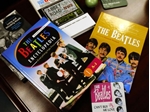
Like many music lovers, Kenneth Womack has this date circled in his mind's calendar.
Thirty-five years ago, on Dec. 8, 1980, John Lennon was gunned down outside his New York City apartment. The tragedy left a great unanswered question: Had Lennon lived, what course would The Beatles and the culture have taken?
“The effect of time almost makes it worse,” said Womack, a Monmouth University dean and a leading scholarly authority on The Beatles. “On a micro level, his life was destroyed and his family was destroyed because of his assassination. On a macro level, we were all denied the opportunity to see how he would have grown and matured through some really turbulent and at times buoyant times.”
It's tantalizing to theorize what might have been. Womack, dean of the Wayne D. McMurray School of Humanities and Social Sciences and author and editor of several books devoted to The Beatles, shared his thoughts on the subject with the Asbury Park Press.
For starters, would the Fab Four have gotten back together?
“I absolutely do think they would have,” Womack said. “John had remarked before his death that it was getting very difficult to pass up the dollars details

I should have cared more, but I didn't. I should have cried, but I didn't.
He meant so much to me.
But the day John Lennon died, my life and his music were never more distant. On the night of December 8, 1980, I was soldering circuit boards in my apartment above a bar in downtown Washington, D.C., when I heard the news. I was building a synthesizer; I was in a psychedelic new wave dance band called Tiny Desk Unit.
I grew up with The Beatles. Their arrival in the United States happened when I was eleven. I heard Beatlemania unfold on my transistor radio and black-and-white TV. I still remember how the lights from Shea Stadium lit up the night sky when The Beatles played there in 1965. I still remember wishing I was there. I never did see John Lennon live, but his music had been my life's soundtrack.
I was inspired by The Beatles to pick up the guitar and play, as were so many kids of the day. I think the words of the guitar teacher to my mom were something like, "He's got no musical ability; don't waste your money." It took fourteen years for me to get over that, and one day I quit my record store job and decided to be an electronic musician, a decision that would eventually lead to my work at NPR details
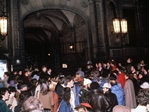
Some losses echo like thunder.
And sometimes that thunder can echo for years, decades.
Four gunshots, that's all it took. The thunder of those shots continues to echo.
A tremendous loss, one felt today just as deeply as it was felt on Dec. 8, 1980.
The night John Lennon died, I was one day shy of being 5 months old. At that age, you have no idea what is going on. You don't know that a man who sang his vocal cords bloody on "Twist and Shout" was no longer with us. You had no clue that the artist who gave us "Strawberry Fields Forever" had passed away. It didn't register that a visionary who urged us to "Imagine" living life in peace had been terribly silenced. There was no concept of loss when a father who wrote songs like "Good Night" and "Beautiful Boy (Darling Boy)" for his children had been taken away from his family.
But you grow up. And if you're lucky, you grow up in a household like I did, where your parents were fans of the music. I can remember being a very young boy and seeing calendars and photos with The Beatles on them. I remember my dad pointing to each Beatle and telling me their names. I remember him pointing at one and saying, "And this one isn't here anymore. He died. An details
